

|


|
 |
 |
 |
 |
 |
 |
 |
 |



|
Dominican Republic All-Inclusive Resorts Sale
The growing popularity of scuba diving means that many vacationers are certified divers looking for good diving spots, and many novices are curious to learn what is going on underneath the sea. While the Dominican Republic is a great place to begin diving, it is also a haven for serious aficionados. The country's undersea world has excellent reef diving, good visibility, warm waters, wrecks, caverns and marine life offering a wealth of diving experiences around the island. In the North Coast region of Puerto Plata, visitors staying in resorts from Costambar to Cabarete head to Sosua for diving. It is an excellent area for taking classes and satisfying Open Water Certification course requirements. There are shallow reefs where beginners can sit on the sand underwater and watch the tropical fish swim by. Sosua also has great advanced dives, too, especially in the waters near the international airport, ten minutes away. The main diving spots there are Las Palmitas, the Airport Wall, Five Rocks, with plenty of coral, and La Piramide, a series of interconnecting tunnels. The best months for diving in the North are June to September when the water is at its calmest and visibility is at its best. East of Sosua, about 3 kms. from Cabarete are more sites for advanced divers. An hour from Sosua in Rio San Juan, visitors staying at Caribbean Village Playa Grande can dive with the Gri Gri Dive School. The surrounding waters offer good beginning and advanced dive sites with abundant tropical fish and marine life. It is possible to see dolphins, whales (from January to March), barracudas, groupers up to 1-1/2 meters long and many colorful reef fish. In nearby Cabrera, advanced divers will enjoy fresh-water cave-diving through wide tunnels. The site has a beautiful inland lake, where the light effects are amazing with the 10-meter wall and the underwater trees reflected. Further along the North coast is Las Terrenas which has a dive site called "The Whales," where one can dive in holes and view lobsters, groupers and coral formations. El Portillo Beach Resort offers special scuba diving packages with your own or with rented equipment. A full range of instruction is also available through the resort for open water diver certification to dive master. In the northeastern peninsula of Samana, guests staying at the area's hotels such as Gran Bahia, Hotel Cayacoa or Hotel Cayo Levantado. Here, off the Las Galeras beach is the Cabron, an advanced dive site from 5 meters to 54 meters down with plentiful rock and coral formations, tons of fish, and a wall. Heading west of Sosua along the North coast are wrecks to explore off the shores of Cofresi and Montecristi. Major salvage operations are underway in the waters off the province of Montecristi. One particularly interesting dive trip is to Punta Rucia near Montecristi. There, an atoll called Cayo Arena (Sand Island), has incredible coral diving. Cayo Arena is sometimes covered completely by the ocean, and at other times is extremely visible for exploring.
This fleet was made up by the Spanish ships Santa Catalina, San Jorge and Santa Maria de Guadalupe, that left South America, with a stop in Honduras. En route back to Spain in 1563, they were caught in a storm, and crashed into a reef in the Montecristi area. Only the Santa Maria was salvaged. The other two ships drifted off the reef and went down in deep water (60-90 ft.). Lost was a cargo of jewels, gold, and more than 300,000 silver coins. In the South coast of the Dominican Republic, there are two well known dive shops in the capital city of Santo Domingo that plan excursions, and rent or sell equipment. The best area for enjoyment of reef and wreck dives, night dives and fresh water cave diving near Santo Domingo is La Caleta National Underwater Park. At La Caleta, one can choose either shallow or deep water diving. During the months of November to January, the water on this side of the island is at its calmest, increasing visibility to its maximum level. Here, you can discover the Hickory wreck, an iron ship used many years ago to explore Spanish galleon wreck treasures. A second more recent wreck, at a depth of 100 feet, is only a few minutes away by boat from the Hickory. The coral formations at this depth are a carpet of color, a tapestry of textures creating a profound sense of wonder at the delicate balance in this ecosystem. This underwater park can be reached in about 17 minutes by fast boat from Boca Chica, or about 25 minutes by slow boat from the public park on Las Americas highway. The Don Juan Beach Resort in Boca Chica is located near La Caleta and has its own PADI-certified diving school which offers diving trips to the area and across the island. Another good diving spot for experienced divers is Catalina Island, where the "wall" attracts not only vacationers from the nearby La Romana resorts but also divers traveling from the North coast. The site is 20 minutes by boat from a dock in La Romana. This is probably one of the few places to see very large fish, such as grouper. Most of the big species around the island's popular coral reefs have been depleted by intensive spear fishing. Catalina's shallower dive of about 25-30 feet off the island is simply beautiful. An abundance of purple sea fans, orange, brown and gray gardens, and a variety of multi-colored, fluorescent fish surround divers as they wander about. There is excellent visibility of 90-100 feet and good light refraction. Near to La Romana is Bayahibe where large schools of fish are accustomed to bread feedings from local divers. Just waving a white glove will produce a flurry of activity. This practice is being discouraged by ecologically-minded people as it reduces the survival instincts of the fish, and disrupts the food chain. A popular area for diving in the Southeast of the country is Saona Island, which can only be reached by boat from La Romana. The island is a protected sanctuary within the National Park of the East, and there is abundant wildlife and marine life, such as turtles, whales, sharks and a good chance of seeing big fish. Punta Cana located on the East coast of the island, with its own international airport, features the longest coral reef in the whole island - of about 30 kilometers long. There, the Punta Cana Dive Center operates with its base at the Punta Cana Beach Resort. The center is a member of the PADI International Resort Association. It offers PADI certification courses for all levels including rescue diver and dive master which can be completed in 6 days. The Dive Center provides all material and equipment for the certificate process. Beginners to advanced and professionals may enjoy visits to reef caverns and wrecks, or participate in night dives and excursions to Catalina and Saona Islands. The Punta Cana Group is ecology-oriented, and maintains an active program for the preservation of the flora and fauna of the area. An isolated place along the southwest shore, Los Bajos in Bahia de Ocoa (Ocoa Bay), has been reported to have large fish populations. Only a two-hour drive from Santo Domingo, the bay is a popular weekend resort for many people who live and work in the capital, but have beach houses along the quiet, gray-sand shores of Palmar de Ocoa. Further to the West is Barahona, a new area now being developed for ecotourism,which should be on the list of divers seeking unexplored and seldom-visited sites. Many beach resorts around the country offer diving packages and guided excursions. There you can obtain your certification in an intensive course over a few days. Basic and advance training are available. |

| DiveGuide.com Scuba Diving Vacations & Dive Holidays - Book direct dive travel with scuba diving operators, resorts, dive liveaboard yachts and dive travel representatives worldwide. We provide free scuba diving information for the traveling diver on vacation and holiday in and to scuba diver destinations around the world. |

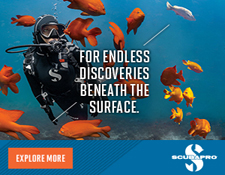
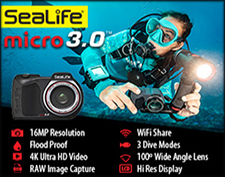
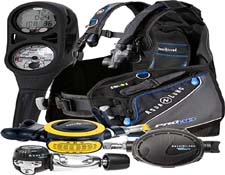


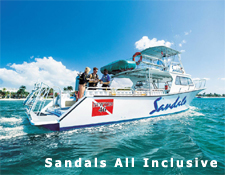



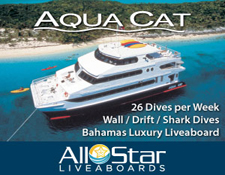
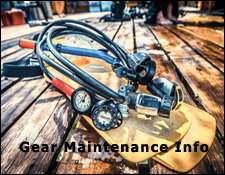


|